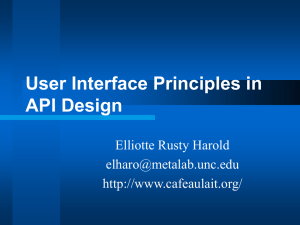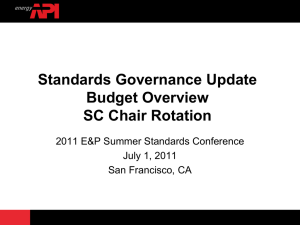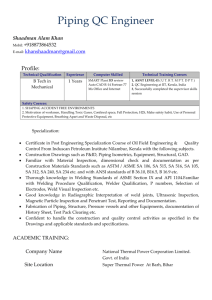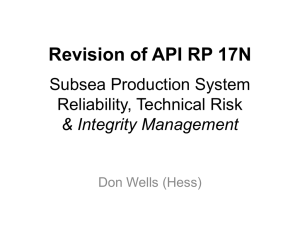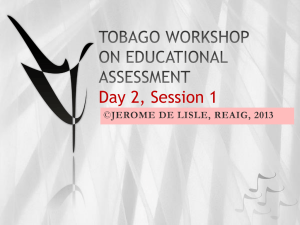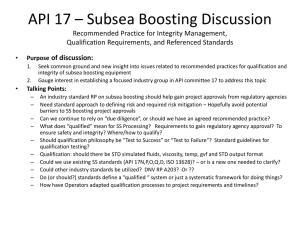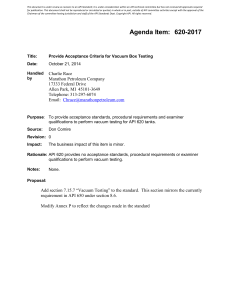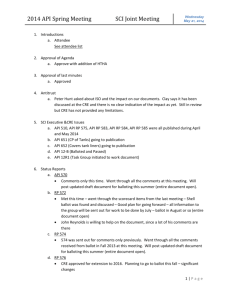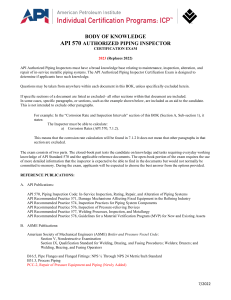RA&A`s ECAP Powerpoint presentation shows how we utilize this
advertisement
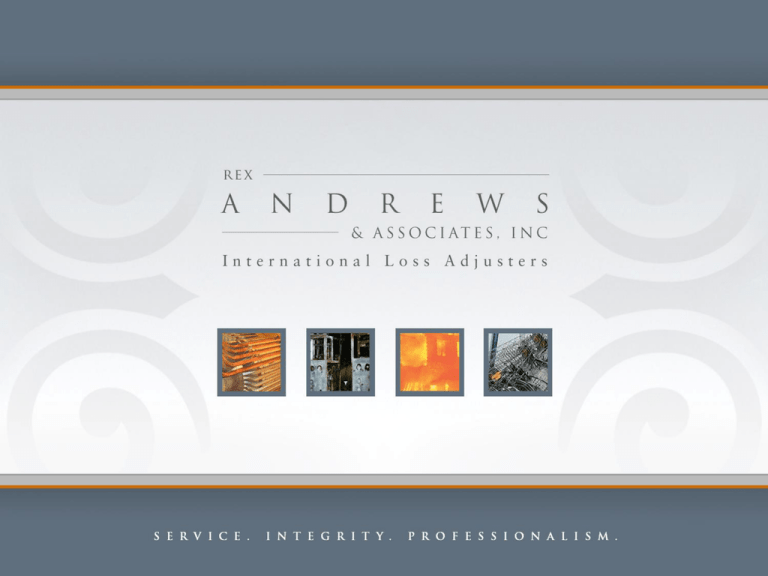
ECAP ENERGY CLAIM ADJUSTMENT PROTOCOL A quantum step forward in handling complex claims. ENERGY CLAIM ADJUSTMENT PROTOCOL • Indemnity based – Assured contracts repairs • Team approach maximizes the proactive efforts of the Assured and Insurers. Transparency of the process is essential. • American Petroleum Institute (API) Recommended Practices form the agreed standards for damage evaluation • The API Procedural format hastens damage assessment and expedites repairs • The use of agreed standards simplifies the ultimate adjustment process. AMERICAN PETROLEUM INSTITUTE API Recommended Practice (RP) 579 • The ASME and API design codes and standards for pressurized equipment provide rules for the design, fabrication, inspection and testing of new pressure vessels, piping systems, and storage tanks. …Fitness-For-Service (FFS) assessments are quantitative engineering evaluations which are performed to demonstrate the structural integrity of an in-service component containing a flaw or damage. API Recommended Practice (RP) 579 • The assessment procedures in this recommended practice can be used for fitness-for-service assessments and/or re-rating of components designed and constructed to the following codes: • ASME B&PV Code, Section VIII, Division 1, Division 2 (Fired and Unfired Pressure Vessels) • ASME B&PV Code, Section 1 (Power Boilers) • ASME B31.3 Piping Code (Process Piping) • ASME B31.1 Piping Code (Power Piping) • API 650 (Oil Storage Tanks) • API 620 (Low Pressure General Storage Tanks) EXPEDITING ALGORITHMS STEP 1 . ESTABLISH THE TEAM • Agree on common goals. The intent of the Policy is to place the Assured back in the position he was in immediately before the loss. • API standards provide independent guidelines for damage assessment and repairs. Insurers agree to provide technical expertise to implement the API procedures, in concert with the Assured. • Transparency is critical. All parties must cooperate to achieve maximum benefit. • Production of a common cause report is an important intermediate goal. Subrogation/recovery may be possible. STEP 2 . ASSESS THE DAMAGE • Zoning: overpressure & heat exposure • Prioritize vessel assessment schedule according to applicable zoning criteria • Place orders immediately for critical items located in highest intensity damage zones • Determine required repairs for vessels in lower intensity damage zones • Sub-systems (piping, instrumentation, controls) assessed after critical vessels • Investigate potential consequential effects to other units “ZONES OF DARKNESS” DAMAGE ZONE CRITERIA STEP 3 . CHART REPLACEMENTS AND REPAIRS, PREPARE FOR CLAIM • Scope of work documentation for the selected EPC contractor evolves directly from the API damage report. • Order shorter lead time components (instruments, controls, etc.), now that major items are in-process. • Engage accountants for BI, if applicable. • Consider potential milestones and magnitude of partial payments. • Collaboration as issues arise. “Betterment” issues may be likely, but addressable. STEP 4 . ADJUSTMENT/SETTLEMENT • The Adjustment process is now almost an afterthought. Seriously contentious issues have been avoided by the team approach and use of agreed standards. By implementing this approach, the loss itself is minimized to the greatest extent possible. The Assured has retained control of the repair (by utilizing their selection of contractor and using their preferred engagement practices) and has been a critical team member in the damage assessment. Insurers have proactively engaged engineers and specialists to accurately assess the damage and develop the scope of repairs. Both parties reap the benefits of this precisely structured, transparent approach to handling the loss. No surprises!

